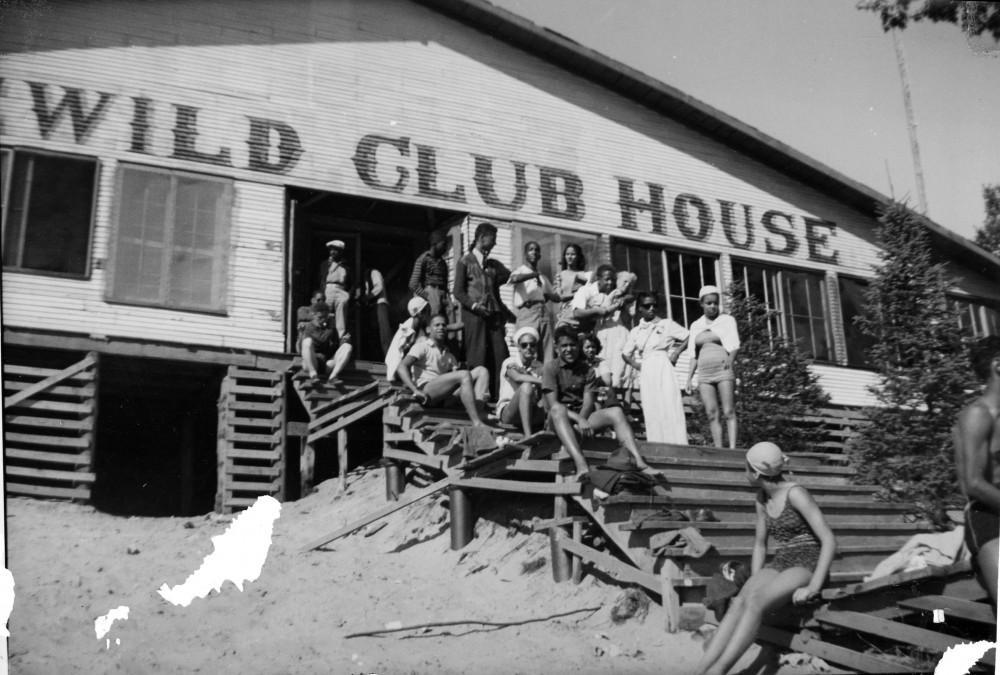‘Whatever Happened to Idlewild?’

GVL / Courtesy – Robert Abbott Sengstacke, Getty Images The Idlewild Club House, Idlewild, Mich., pictured in September of 1938.
Feb 6, 2017
The Grand Valley State University community will have the opportunity to watch “Whatever Happened to Idlewild?” with the movie’s director Thursday, Feb. 9. The screening will take place in the Mary Idema Pew Library Learning and Information Commons Multipurpose Room from 7 p.m. to 8:30 p.m. and will be directly followed by a Q&A session with filmmaker Coy Davis Jr.
“We wanted to provide the Grand Valley community with the opportunity to learn about the rich cultural and historic legacy of Idlewild,” said Erin Fisher, a GVSU library program manager. “Idlewild, located north of Grand Rapids in Lake County, was an immensely popular African-American vacation community that thrived for decades during the era of segregation.”
Many students and locals are unfamiliar with Idlewild, also referred to as ‘Black Eden,’ despite the fact it is a significant part of greater Grand Rapids’ history.
“Before 1964, when the Civil Rights Act passed, Idlewild was one of only a few resorts throughout the United States where African-Americans could enjoy summer recreational activities,” Fisher said. “Swimming, boating and other activities are synonymous with Michigan summers, but legalized discrimination largely kept African-Americans from such excursions.
“This event will offer a unique opportunity to gain a deeper understanding of racial segregation before the passing of the Civil Rights Act through the exploration of a local heritage site.”
Fisher hopes there will be a good turnout at the screening event and is eager for the opportunity to expose the GVSU community to this piece of history.
“What excited me most about this event is that (it) will allow for attendees to gain a deeper understanding of America’s history of racial segregation through the exploration of a local heritage site,” Fisher said.
Davis Jr., who is a Grand Rapids native, was a school teacher for several years and can be credited for starting the African-American television show “All About Black,” which ran on NBC, channel 8.
After starting the television show, Davis Jr. decided to work in the industry full time. He worked for various stations and channels in Atlanta, Detroit, Chicago and Milwaukee before returning to Grand Rapids.
Upon returning to Grand Rapids, Davis Jr. came up with the concept for a film about Idlewild. He confided his vision for the film to a colleague but admitted he had neither the money nor the time to see the project through to completion. Davis Jr. said it wasn’t long before his colleague came back to him with funds for the project.
“I made the time, and three years later and $250,000 later, we have a finished product that I am very proud of,” he said.
“Whatever Happened to Idlewild?” has been screened and scrutinized in libraries, museums, and on college campuses all over the United States.
“I am very pleased to have the opportunity to present it to Grand Valley,” Davis Jr. said.
Davis Jr. witnessed the Idlewild community firsthand, and it was this personal experience that enabled him to provide a unique perspective on the topic.
“History to me was growing up in Idlewild and seeing African-American entrepreneurs taking care of business,” Davis Jr. said. “Seeing how we all work together, there was never any fights or arguments, shootings or killings there. It was always happy times.”
Davis Jr. credits his motivation and perseverance to his upbringing and the community of Idlewild.
“As a result of growing up in that environment, plus my father and mother were entrepreneurs, I gained a sense that there was nothing I couldn’t do, despite being African-American,” he said.
Davis Jr. is proud of the film and is a strong advocate of the importance and relevance of its message.
“The relevance of the film to a college student today, and yesterday as well, is how this country goes through different periods and cycles,” he said. “This film is nothing more than a microcosm of how this country goes in cycles, and, more importantly, (it is relevant) because it is Black History Month.
“(The) most important part of (this film) is the fact that it is truly a black history film because it talks about the positive aspects of African-American history and not the negatives.”
The film viewing and Q&A session are free and open to the public. For more information, visit http://www.gvsu.edu/oma/black-history-month-24.htm.

























